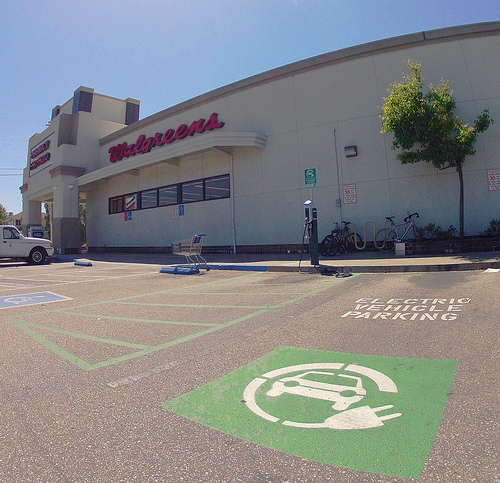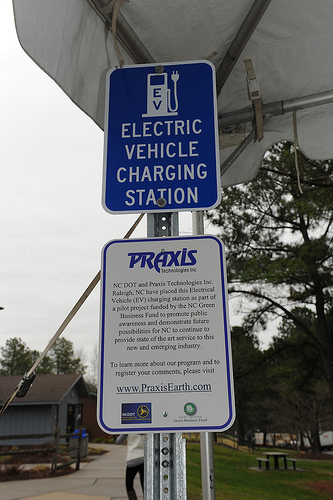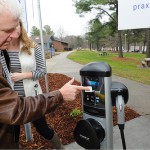Electric vehicle charging stations: Too little, too late?
Early next year, those who live and work near New York City’s Washington Square Park can expect to see workers installing electric vehicle (EV) charging stations in the area.
The stations won’t be as large and imposing as those of the past, though. In fact, they’re designed to blend with the urban environment: NY-based HEVO Power has engineered them to look like manhole covers. They’re composed of a power station that can be embedded in the pavement or bolted to the street, as well as a vehicle receiver connected to a battery and a smartphone app that tells motorists when their vehicle is aligned with the station. The app will consist of features similar to those offered by Park It!, Map It!, and Pay It!
The manhole chargers will be able to transmit up to 10 kilowatts of energy to the EV and rely on a resonance charging system meant to reduce energy losses and to transfer energy faster and farther.

EV charging stations are popping up in New York and Atlanta, but sales are stagnant. From Richard Masoner.
HEVO Power is piloting the system in Manhattan, but other locales are introducing new EV charging stations, too. In Georgia, one of the fastest growing states for EV ownership (almost 3,000 at last count), two new EV charging stations were dedicated earlier this month at a state-owned parking lot across from the Georgia Capitol.
These efforts might at first glance indicate that electric vehicle ownership is on the rise among commercial car owners, but both initiatives were trumpeted by government officials or designed for large entities like PepsiCo and Walgreens. (HEVO Power created its stations primarily for its work with NYU, which has buildings near Washington Square Park, and other companies, such as E-Ride and City Harvest.)

A charging station in North Carolina. From NCDOT.
Indeed, the numbers of electric vehicles sold to commercial car drivers don’t suggest that “incentives” like more discreet charging stations or, indeed, a greater proliferation of charging stations overall, are the right enticements for motorists choosing between EVs, hybrids, and gas-powered vehicles.
According to the National Automobile Dealers Association, approximately one third of 1 percent of the 6.4 million new vehicles sold from January through May of this year were zero-emission. And Honda, which delivered a modest two-year supply (about 1,100) of its lease-only Fit EVs to dealers last July, discovered in early spring that just 176 takers had signed up. To jumpstart the sluggish figures, the company cut its thirty-six month lease rate by about a third over the summer to $259 a month, offering, in addition, no down payment and unlimited mileage.
The tactic has worked, but analysts aren’t sure the move adds to Honda’s bottom line—the company won’t say whether the line is turning a profit—and it sets buyers’ expectations for a more cheaply priced EV.
But price is exactly what the industry should focus on, argues one marketer. In an editorial for MediaPost last week, principal and creative director Ted Page of Captains of Industry opined that EVs would sell better if marketers pushed its savings. For example, according to the Northeast Electric Vehicle Network, the average cost of electricity in its region is 13 cents per kWh or, put in driving terms, about $1 per gallon of gas—that’s a significant costs savings for motorists facing gas prices at $3 per gallon.
The sustainability movement will have to see whether the EV car segment takes off due to incentives like a greater number of charging stations, lower prices, or better marketing.
Related Posts
Category: Parking Tech




















